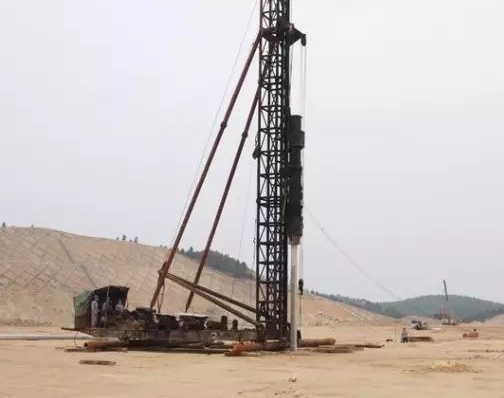When constructing pile foundations in karst cave conditions, here are some key points to consider:
Geotechnical Investigation: Conduct a thorough geotechnical investigation prior to construction to understand the characteristics of the karst cave, including its distribution, size, and possible water flow patterns. This information is crucial for designing appropriate pile foundations and assessing potential risks.
Pile Type Selection: Choose pile types that are suitable for karst conditions. Common options include drilled shaft piles, drilled steel pipe piles, or micro piles. The selection should consider factors such as load-bearing capacity, resistance to corrosion, and adaptability to the specific karst features.
Pile Design: Design the pile foundations based on the geotechnical investigation and engineering requirements. Consider the irregularities and uncertainties associated with karst conditions. Ensure that the pile design considers the bearing capacity, settlement control, and potential deformations.
Pile Installation Techniques: Select suitable pile installation techniques based on the geotechnical conditions and pile design requirements. Depending on the specific project, options may include drilling and grouting, pile driving, or other specialized methods. Ensure that the chosen technique minimizes disturbance to the karst cave and maintains the integrity of the surrounding rock formations.
Pile Protection: Protect the pile shafts from the erosive effects of karst features such as water flow or dissolution. Measures such as the use of casing, grouting, or protective coatings can be employed to safeguard the pile shafts from deterioration or damage.
Monitoring: Implement a comprehensive monitoring system during pile installation and subsequent construction stages. Monitor parameters such as pile verticality, load transfer, and settlement to assess the performance of the piles and detect any potential issues or deformations in a timely manner.
Safety Measures: Ensure that construction personnel receive appropriate training and adhere to strict safety protocols. Implement safety measures to mitigate risks associated with working in karst cave conditions, such as providing adequate personal protective equipment and implementing secure work platforms.
Risk Management: Develop a risk management plan that addresses the unique challenges of karst cave conditions. This plan should include contingency measures, such as handling unexpected water inflows, ground instability, or changes in ground conditions. Regularly assess and update the risk management plan as the project progresses.
It’s important to note that karst cave conditions can be complex and unpredictable. Consulting with experienced geotechnical engineers and professionals with expertise in karst geology is highly recommended to ensure the successful construction of pile foundations in such environments.
Post time: Dec-22-2023


